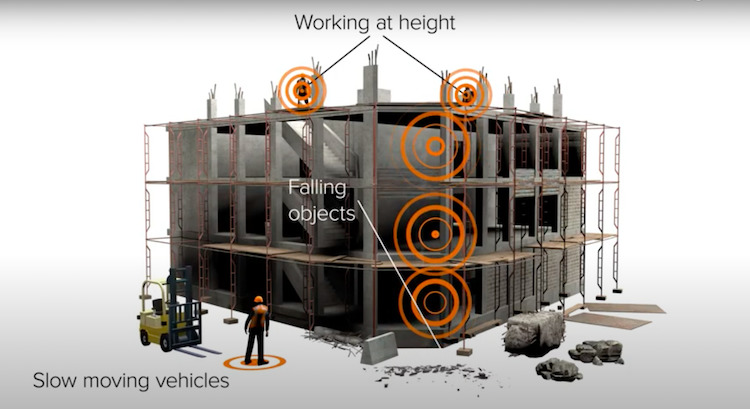
Monitoring health and safety and productivity via worker wearables is becoming increasingly popular. David Redmond considers the benefits that can be derived from the technology and the steps that should be taken to attain them.
Global heavy industry is embracing digital transformation, and ‘worker wearables’ are playing a key role in improving project bottom lines by digitally monitoring jobsite optimisation. The problem is: there’s no defined universal standard yet of what the technology should be, what exactly it should do, and how to deploy it at scale.
The pandemic undeniably moved the dial for clients to address ESG commitments, while workers became far more aware and comfortable with monitoring tools if the motivations were shared and communicated. The goal for all is making job sites safer, improving day-to-day experiences through operational efficiencies, and offering a more enticing environment by showing workers how the company values their quality of life. Although this proposition sounds good, it isn’t enough.
What we know is that a siloed approach to measuring a limited range of metrics only shows you a part of the story. All providers of worker wearables will have to take on the responsibility of marrying the obvious efficiency and safety benefits that come from monitoring with wellbeing too – a big grey area with many unknowns.

“There’s no doubt that wearable tech has increased ‘Big Brother’ fears as it gives employers and managers the ability to locate and monitor workers in real time.”
Health and mental health
When it comes to mental health, it is certainly ‘good to talk’: but the answers lie in science. That includes looking at a range of measurement indicators with benchmarked metrics, from BMI and cholesterol, blood glucose, general physical fitness, exposure to hot/cold temperatures, hydration, and personal circumstances, for example. This should be underpinned by asking workers about their general state of mind before and after a three-month period: this will show a difference. This process of highlighting crucial health metrics becomes a point of consciousness for workers and they know what their weaker points are from the outset and in real-time.
This is one example. However, currently less than 10% of providers are finding ways of incorporating optimisation and safety monitoring data alongside a modern workplace health offering. More needs to be done.
Big Brother vs ethical tracking
While there are many benefits to knowing actual site labour output versus planned labour output and social benefits to employee monitoring, the practice has been contentious for a vocal minority. There’s no doubt that wearable tech has increased ‘Big Brother’ fears as it gives employers and managers the ability to locate and monitor workers in real-time.
This has tainted the worker wearable industry, particularly as it has been abused before. It’s been reported that China uses wearable tech to spy on workers and there have been concerning reports of China going as far as to monitor employees’ brainwaves.
Spying on workers will only erode the trust in, and create contempt for, workers’ wearables.
Managers need to ask themselves why there’s a lack of trust in the first place and find ways of establishing trust before introducing wearables. This can be achieved via posters, in-app videos, toolbox talks, workshops and company ethos. As with any technology deployment, communication is key. Engagement with workers and site management to educate them creates buy-in to the project.
“The focus should be using the data to ensure that worker health and safety is just as much a priority as daily production rates.”
Responsible data use
What we uncovered when it came to ethical tracking was that collected data can be anonymised and aggregated for site health and site optimisation reporting, bespoke for safety, while workers could still benefit from access to their own personalised private health data through an app on their phone or communal worksite tablet. The focus should be using the data to ensure that worker health and safety is just as much a priority as daily production rates.
Future challenges and hopes
Deployment strategies play an important role when undertaking worker wearable projects. Special consideration needs to be applied to API integrations with leading construction management software. The administering of devices should also be considered: who charges them? Where are they stored? Are they kept on site, or given to employees? What might seem basic can be complex if not thought through when dealing with sometimes tens of thousands of workers.
Challenges and opportunities
As worker wearables will be geared to provide very real warnings about material health threats, we can expect to see the partnership of big pharma and technology move ever-closer. The results will impact construction robotics and working practices and seismic preventative health measures.
Tech entrepreneur David Redmond is the founder of 36Zero, a data platform that leverages its own proprietary hardware, including wearables, for job site optimisation, safety and worker wellbeing.
Don’t miss out on BIM and digital construction news: sign up to receive the BIMplus newsletter.













